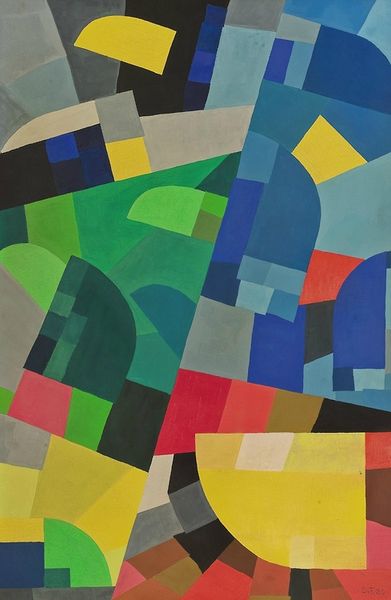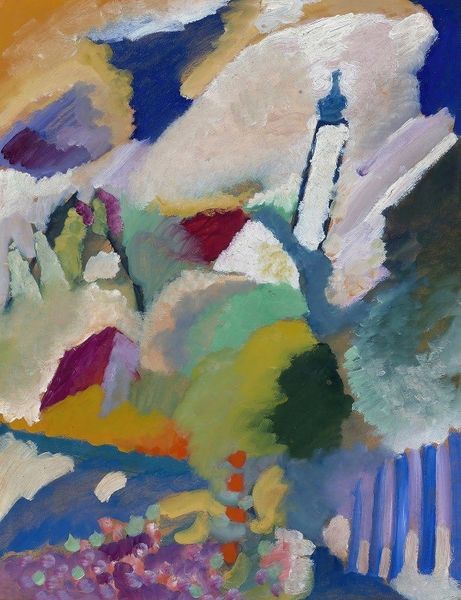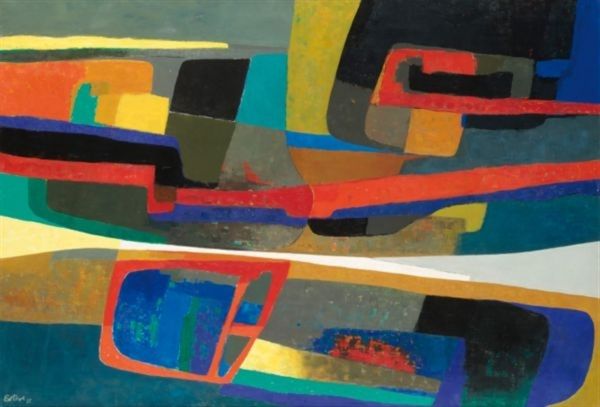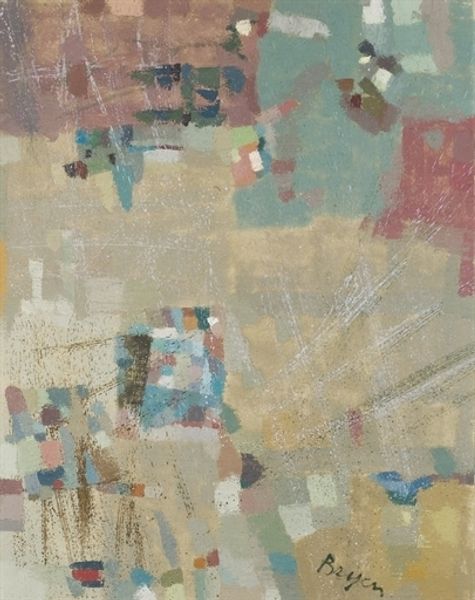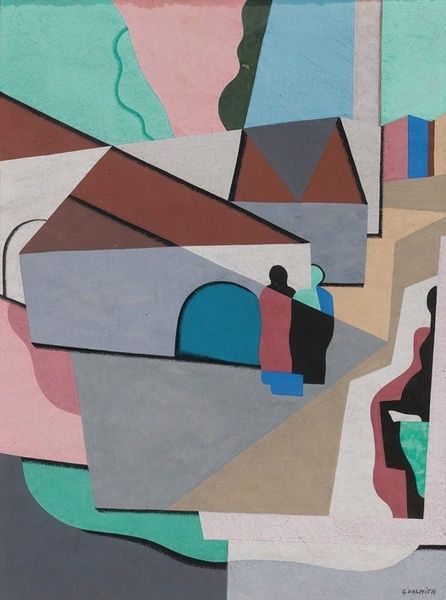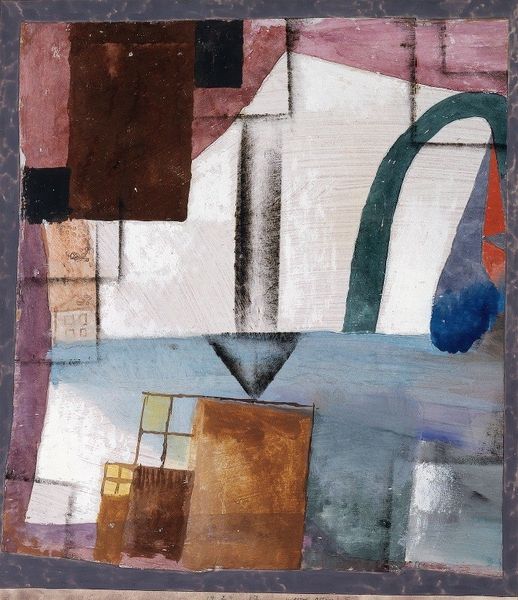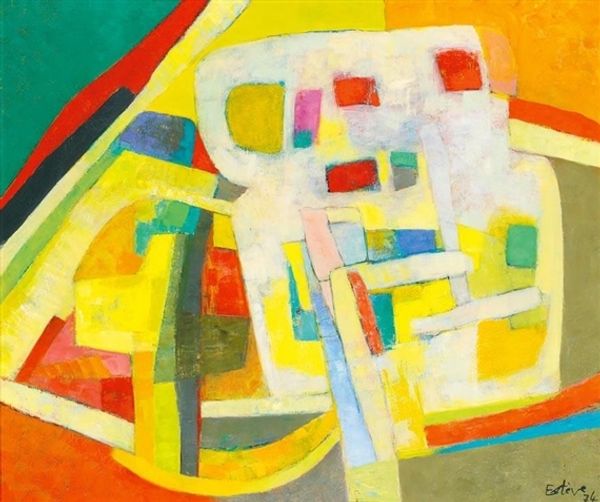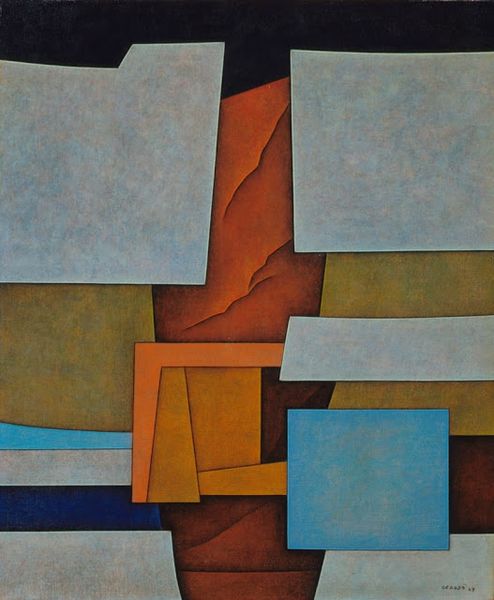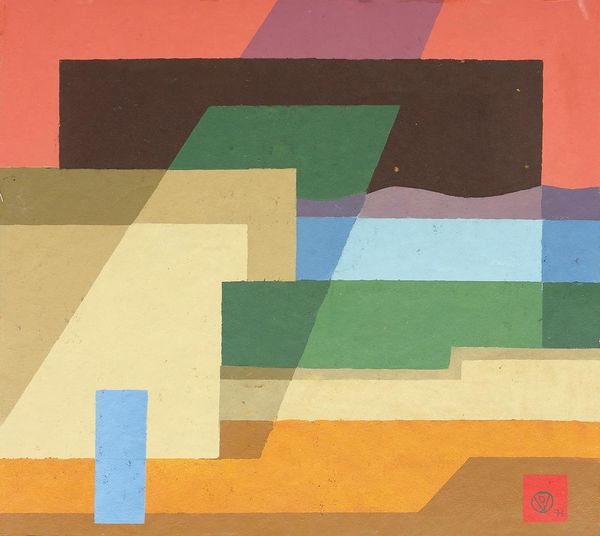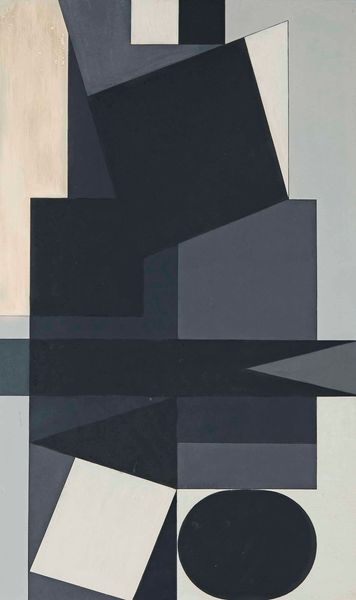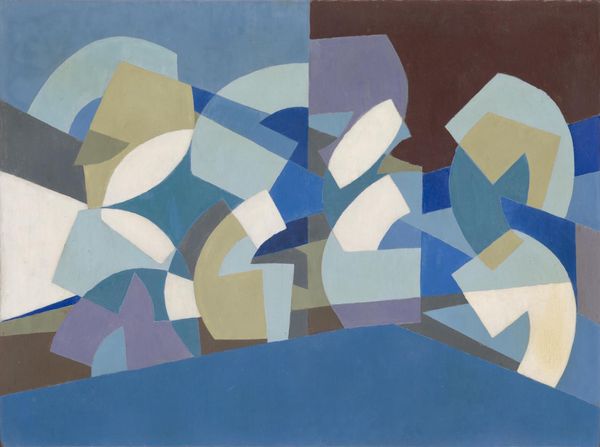
acrylic-paint
#
abstract-expressionism
#
acrylic
#
abstract painting
#
acrylic-paint
#
oil painting
#
acrylic on canvas
#
geometric
#
geometric-abstraction
#
abstraction
#
modernism
Dimensions: overall: 218.4 x 165 cm (86 x 64 15/16 in.) framed: 221.6 x 168.9 cm (87 1/4 x 66 1/2 in.)
Copyright: National Gallery of Art: CC0 1.0
Editor: So, this is "Blue," an acrylic on canvas work by Kenzo Okada from 1970. It’s a geometric abstraction that feels…serene, almost like a hazy memory. How do you interpret this work? Curator: The title "Blue" isn’t just a descriptor, is it? It evokes an emotional state, a psychological space. Look at how Okada uses different shades and tones. Blue can symbolize many things, from peace and tranquility to sadness and contemplation. In Japanese art and culture, blue can even represent immortality or the spiritual realm, reflecting a connection to nature. Does this resonate with your initial reaction? Editor: Yes, that makes sense. I definitely see the serenity, and now I'm thinking about that possible link to nature, even though it’s abstract. Are there specific symbols I should be looking for? Curator: Instead of concrete symbols, consider the abstract forms as symbolic gestures. Notice the rectangles and squares. Are they rigid structures, or do they seem to float and shift? Geometry, depending on cultural context, can symbolize order, the cosmos, or even the divine. Okada might be hinting at the underlying structure of the world, veiled by emotion. What do the varying depths suggest to you? Editor: It’s like…layers of feeling, maybe? Some blues are lighter and more open, others darker and more intense. It definitely makes it more complex than I initially thought. Curator: Exactly! He creates a visual language using colour and shape. It merges abstract-expressionism with his Japanese heritage. Color field painting also emerges; artists allow washes of color to evoke feelings and thoughts without necessarily alluding to specific imagery or concepts. So, in many respects, it makes it quite accessible as the artist intended it to represent individual thought. Editor: I hadn’t thought about it like a language before. That’s fascinating. Thanks, I’m seeing so much more in it now. Curator: And I'm also seeing more too. These conversations let cultural memories emerge into broader thought.
Comments
No comments
Be the first to comment and join the conversation on the ultimate creative platform.
